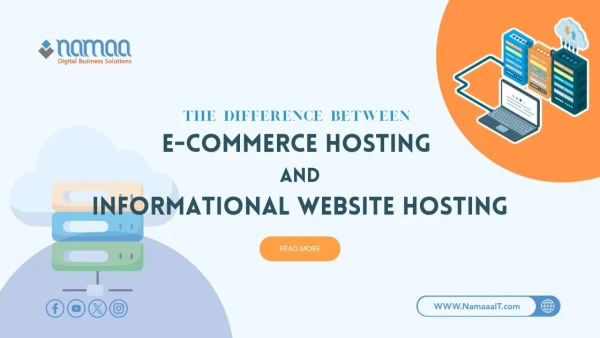According to recent reports, multi-vendor marketplaces account for over 50% of global online retail sales, with the market expected to reach $7.4 trillion by the end of the year.
Multi-vendor functionality is not just about diversifying products; it empowers platforms to attract a broader customer base and increases competition among sellers, resulting in better pricing and improved service quality.
This model also enables platforms to generate multiple revenue streams through commissions, subscriptions, and paid advertising.
For vendors, it provides an opportunity to reach a wider audience without the need for heavy investment in infrastructure or marketing.
As for customers, they benefit from a seamless shopping experience where they can compare products and prices from various sellers all in one place.
In today’s fast-paced e-commerce environment, supporting a multi-vendor system is a critical step to ensure scalability, diversity, and competitiveness in global markets.
What Is the Multi-Vendor Feature in E-Commerce?
The multi-vendor feature in e-commerce refers to a platform's ability to host more than one independent seller, each of whom can showcase and sell their products through the same store or online marketplace.
This model is similar to what major platforms like Amazon, Noon, and Etsy use, where hundreds or even thousands of sellers list their products within a single storefront.
In this system, the platform acts as both a technical and administrative intermediary, giving each seller a dashboard to manage their products, pricing, inventory, and customer orders, while the platform maintains overall supervision, service quality assurance, and commission collection.
This feature gives the platform significant flexibility—it doesn’t need to manufacture or stock products itself but allows sellers to take on that role.
In return, sellers gain visibility in front of a larger audience without the cost of building their own online store or running extensive marketing campaigns.
In 2025, as competition intensifies and customer demands diversify, a multi-vendor system isn’t just a tech option—it’s a strategic business model that supports dynamic ecosystems built on variety, increased product volume, and rapid growth without bloated operating costs.
How Does Multi-Vendor Functionality Enhance Product Diversity?
One of the most immediate effects of implementing a multi-vendor feature is the massive increase in product diversity.
Instead of relying on one supplier to stock your store, a multi-vendor model enables you to collaborate with hundreds of suppliers and sellers, each contributing products from their own specialties.
This diversity isn’t only quantitative—it’s also qualitative: different categories, price ranges, designs, and product quality.
In a multi-vendor store, you might find local items next to global ones, handmade goods beside manufactured products, creating a rich and complete shopping experience for users.
Additionally, this model allows for faster market response. When demand spikes for a certain product or niche, you can easily onboard new sellers in that category without needing to build a new supply chain from scratch.
This helps platforms stay agile and closely aligned with shifting consumer interests.
Most importantly, such diversity encourages repeat visits, as customers know the store always has fresh and updated options.
The more sellers you have, the more likely it is that users will quickly find what they’re looking for—without needing to leave for a competitor’s site.
How Does the Multi-Vendor Model Improve Customer Experience?
The multi-vendor feature not only benefits platform owners and sellers but also plays a key role in enhancing the customer experience on every level:
More choices: Customers aren’t limited to one or two options per category—they can browse dozens of alternatives from different brands and price points, selecting what suits them based on quality, budget, or reviews.
Competition boosts service: Each seller strives to offer the best possible service to earn good ratings and retain customers.
This leads to improvements in shipping speed, response times, and product descriptions—directly benefiting the customer.
Transparent reviews: Multi-vendor platforms usually include detailed ratings and reviews for every product and seller, helping customers make informed decisions before they even click “buy.”
Reduced out-of-stock issues: If one seller runs out of an item, chances are another seller offers the same or a similar product, reducing lost sales.
In today’s e-commerce landscape, multi-vendor systems are essential to building a user experience that is rich, smooth, and trustworthy.
How Does Multi-Vendor Functionality Impact Pricing Strategies?
The multi-vendor model naturally creates a competitive environment that directly impacts pricing strategies within the platform.
When multiple sellers offer similar or alternative products, each must set competitive prices to attract customers.
This competition pushes sellers to improve their product quality and offer better deals, which in turn enhances the user experience and increases conversion rates.
For the platform itself, having many sellers enables more flexible pricing models. The platform can apply different commissions or subscription fees based on product category or price range, encouraging competitive pricing.
Smart pricing tools can also be introduced to help sellers analyze market trends and optimize their pricing.
The model also supports seasonal discounts, bundle deals, and exclusive offers, which can be managed either by the platform or the sellers themselves.
Such strategies stimulate sales activity, encourage higher purchase frequency, and make pricing more dynamic and user-focused.
Single-Vendor vs. Multi-Vendor Platforms
Single-vendor platforms rely on just one seller to manage all operations and inventory. This allows for complete control over user experience, inventory, pricing, and marketing—but limits product variety and customer choice.
They are typically easier to set up and cheaper to run but can face challenges when scaling due to reliance on one source.
Multi-vendor platforms, on the other hand, integrate many sellers into one system, creating a more diverse and competitive marketplace.
Each seller manages their own inventory, while the platform provides the technical infrastructure and support.
This model enables faster, more cost-effective growth, giving customers more choices—but it requires a robust management system to ensure quality, handle complaints, and coordinate seller operations.
Multi-vendor platforms also face added challenges like aligning marketing policies, monitoring prices, and ensuring a consistent user experience—areas where single-vendor platforms have more direct control.
Choosing the right model depends on business goals, available resources, and long-term strategic vision.
Effective Marketing Strategies for Multi-Vendor Platforms
The success of any multi-vendor e-commerce platform depends heavily on effective marketing strategies that highlight product variety and attract customers to different sellers.
A key first step is building a strong brand identity for the platform—one that emphasizes its unique value, such as diversity, trust, and ease of use.
Content marketing, seller success stories, and positive customer reviews all help to reinforce the platform’s image.
Other effective strategies include targeted and segmented marketing based on customer behavior, using data to tailor promotions and ads.
This includes paid ads on social media, email marketing, and platform-specific promotions for individual sellers.
Search Engine Optimization (SEO) is also critical to ensure the platform and its products appear in relevant search results.
This requires unique content, detailed product descriptions, and keyword usage aligned with both product and seller profiles.
Finally, partnering with sellers in joint campaigns, such as seasonal sales, customer contests, or loyalty programs, boosts interaction and builds customer loyalty to the platform—not just to individual sellers.
Supporting sellers with analytical tools and training also raises service quality and drives collective success.
Summary
✅ Over 50% of global e-commerce sales now come from multi-vendor platforms—proving this model is rapidly growing.
✅ Multi-vendor setups boost product diversity by up to 70% compared to single-seller platforms, expanding customer choice.
✅ Conversion rates increase by 35% on multi-vendor platforms due to competitive pricing and better service quality.
✅ Supporting local and international payment gateways boosts global expansion and reduces cart abandonment rates by 60%.
✅ Businesses using targeted, multi-vendor marketing strategies see revenue growth of 40% within the first year of launch.









